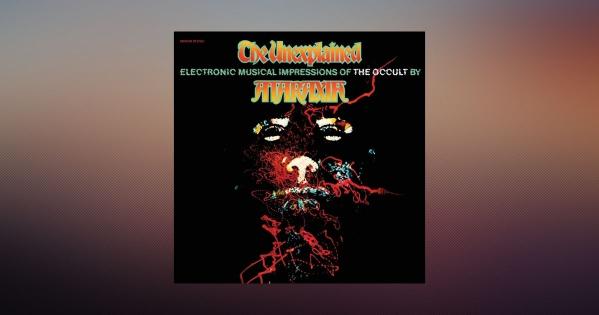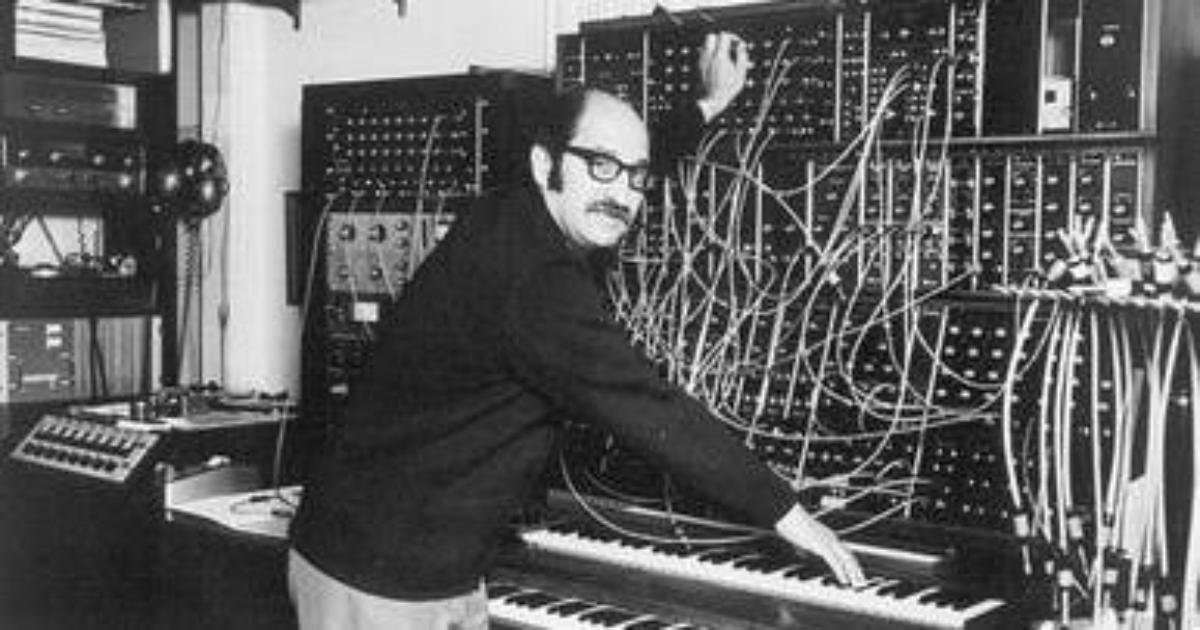The Unexplained by Ataraxia

Welcome to Feature Fridays! Each week, AU music library staff highlights an item from our collection. This week, Student Assistant Ryan Jacobs reviews The Unexplained by Ataraxia.
Electronic music, product of a technological age, has been with us for three decades. It has disproven that Art and Science are the antithesis of each other, and that there is, indeed, a ‘singing in the wires’. As mysticism widens and deepens man’s understanding of himself and the universe, so does electronic music expand the horizons of his creativity.
- Jacques Wilson, poet who worked with Garson on Signs of the Zodiac, from the liner notes of The Unexplained
Mort Garson was a composer and electronic music innovator. He is best known for his instrumental works which feature early use of the Moog synthesizer. Garson first encountered the instrument at a convention in 1967, and was so instantly smitten that he purchased one of the very models made for $15,000. Prior to this, Garson made his living with commercial music, selling jingles and TV themes. According to his daughter Day Darmet, “He was really fascinated by the newness and what this machine could do and how it sparked his creativity, and “woke him up from a world of commercialism” (Pitchfork).

Garson’s album The Unexplained: Electronic Musical Impressions of the Occult (written under the pseudonym “Ataraxia”) is a spiritual successor to another cult classic by Garson, Black Mass (released with the pseudonym “Lucifer”). Both albums involve exploration into the world of occult mysticism. Black Mass (1971) was a moodier slow-burning experiment to see how dark the Moog could get, while The Unexplained (1975) is a more structured and cohesive collection. The liner notes of The Unexplained, written by poet Jacques Wilson (who collaborated with Garson on his Signs of the Zodiac album series) follow the story and structure of the album's thematic material, acting as a meditative tour through the listening process.
While The Unexplained takes the thematic material of occult mysticism seriously, it is not without a whimsical, playful energy. Throughout the whole album is a sense of joyous invention and creativity, full of hypnotic melodies and groovy bass and percussion interspersed with atmospheric soundscapes. The tone is eerie yet accessible, meant not to scare but to invite the listener into exploring the world of the occult.
Standout tracks include “Tarot”, “Deja Vu”, “I Ching”, and “The Unexplained”. “Tarot” sets the tone with shifting high-frequency textures which subside to driving percussion and organ. Fans of the Dungeons and Dragons podcast The Adventure Zone will recognize “Deja Vu” as the mysterious theme music for the series’ first arc. “I Ching” features meandering ghostly synth lines and ethereal plucked sounds, and “The Unexplained” feels like it could be the poppy title music for a supernatural thriller.
I recommend this album to anyone interested in early electronic music, or to those looking to have a fun spooky time as Halloween approaches. If you would like to listen to other synthesizer albums from the rise of electronic music, consider checking out Isao Tomita’s adaptation of The Planets by Holst and works by Debussy on Snowflakes are Dancing, as well as BGM by Yellow Magic Orchestra, all of which can be found in the AU Music Library Collection. I also recommend listening to Garson’s other albums such as Black Mass or Mother Earth’s Plantasia (subtitled “warm earth music for plants and the people who love them”), and learning more about the interesting life of this synthesizer pioneer.